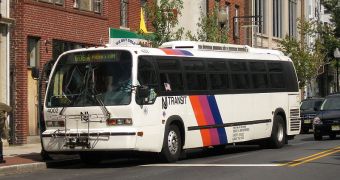Bus and truck fleets are considerable sources of pollution, if we think about the amount of CO2 they spread into the atmosphere. Purdue University thinks it is able to improve the efficiency of these vehicles and has taken this matter into its own hands, by starting a five-year trial which has as a main goal a 50 percent reduction in fuel consumption and carbon footprint.
Once the experts are able to come up with the magic recipe of halving the fuel appetite of commercial vehicles, this action would trigger significant savings, by cutting up to 15 billion gallons of petroleum every year from the initial plan.
Also, this would mean that 155 million tons of carbon dioxide won't end up in the atmosphere, doing the environment a huge favor.
Experts say that the Americans have to support their present lifestyle with 20.7 million barrels of oil every day, ranking first in the list of major oil consumers. China is close enough, since it has a demand of 7.6 million barrels per day, and the trend is growing by 9% every year.
If scientists say it is possible to keep the US dependency under control, in developing countries the oil usage will go off the roof in the near future, according to an unpleasant forecast.
This disturbing situation is partially due to the presence of so many commercial vehicles. It seems that e-commerce's expansion has led to a growth of the number of trucks . Last year, the popularity of e-commerce grew by 100%.
Huge savings would be implied by replacing the regular commercial vehicles with hybrid ones. A lot of money goes on fuel. If the buses go green, the money could be used to boost the local economy, by hiring more people.
"If we can help them in the short and medium term with their technology challenges, that's great for business, and at the same time we're training students to work in industry," said Gregory Shaver, an associate professor of mechanical engineering.
The experts in this field of activity know that they are facing several challenges, since the technology used to power a regular electric vehicle is somehow different than the one required by large commercial vehicles.
They have to come up with effective strategies to redesign the heavy-duty “regenerative braking” system. At the same time, they have to figure out how to recover the heat from the exhaust, while struggling to cut losses.
"More than half of diesel engine exhaust is lost to waste heat out the tailpipe or radiator. If you could better harvest that waste heat, you could make the whole power train more efficient," concluded Shaver.

 14 DAY TRIAL //
14 DAY TRIAL //